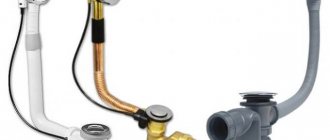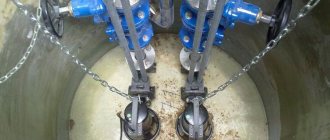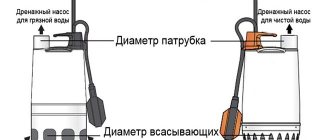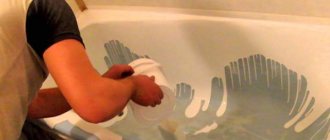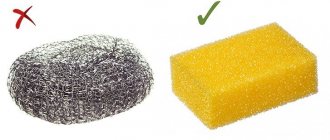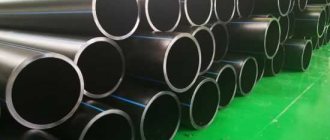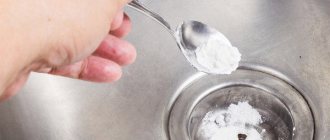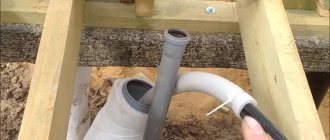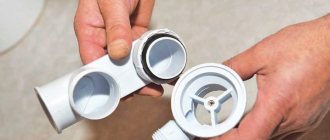The bathroom is a comfortable and bright room that smells fresh. This is where we recharge ourselves with positivity for the entire day ahead. For the above to be true, all plumbing fixtures must perform their functions properly.
A bathroom siphon, for example, must ensure unimpeded drainage of water and prevent the penetration of unpleasant odors that have toxic properties from the sewer pipes. We will try to arm you with all the necessary information so that you can choose a siphon that will not let you down.
Two main functions of a siphon
The plumbing device in question is designed to perform two main functions:
- drainage of water from the font to the sewer;
- preventing the penetration of rotting odors from sewer pipes into the bathtub room.
Each of the functions of the siphon is realized thanks to the design features of this device.
A bath siphon is installed not only so that water can be drained by gravity into the sewer. It has one more function: to prevent toxic gases from entering the bathtub from the sewer system.
The siphon consists of two blocks: drain and overflow. A drain pipe attached to the bottom of the bathtub serves to remove water. When we need to fill a bowl with water, for example, to swim, we plug the mouth of this particular pipe with a stopper.
If you do not control the process of filling the bath with water, there is a danger of liquid overflowing over the edge of the bath. An overflow pipe helps prevent this nuisance. It is attached to a special hole in the front of the bowl, located just below the rim. Before filling the bath with water, all that remains is to make sure that the passage of the overflow pipe is free. When buying a drain device, always give preference to a bathtub siphon with an overflow.
Using the drain and overflow pipe, the siphon function is provided to remove water from the bath: when there is a threat of overflow or when the need for it has ceased.
It is in the bend of the siphon pipe, which is called the “elbow,” that a water seal is formed that prevents unpleasant odors from entering the bathroom through the bathtub drain.
The siphon's design feature allows it to implement the function of protecting against unpleasant odors. The bend of the pipe of this plumbing device, the so-called “elbow”, is a place where there is always a small amount of water remaining after draining. The liquid in the “elbow” forms a kind of water plug - a water seal, which reliably resists gases escaping from the sewer.
Sometimes inexpensive models of siphons without an “elbow” are available for sale. If you don’t want to constantly fight putrid “odors” from the sewer, choose models that have a curved part.
Features of the mechanical drain system
The mechanical type system consists of the following parts:
- Drain neck. Placed under the bathtub.
- Flexible hose. Fits into the hole in the bathtub wall.
- Corrugated pipe. Connects the outlet and overflow parts of the system.
- Siphon. The curved pipe serves as a shutter.
- Retraction. Provides water flow into the sewer system. The part has the appearance of a corrugated or straight pipe.
- A plug that closes the neck hole. It is attached to the overflow grill using a chain.
You can install a mechanical siphon for a cast iron bathtub yourself. System failure occurs when rubber gaskets wear out.
Types and design features of drainage devices
We select bathtubs of various types, and the modern market for plumbing products provides us with the opportunity to select various bathtub siphons. In order not to make a mistake and find a suitable model, you need to understand their design features.
Functional features of the models
Based on their functional features, drainage models can be divided into three main groups:
- classic;
- semi-automatic;
- clic-clac systems.
Models known to all of us that work very simply are considered classic. Before collecting water into the bowl, the drain hole in them is plugged with a stopper. When water needs to be removed, it is enough to pull the plug out of the mouth of the drain by pulling the chain that is attached to it.
As a result of the development of the plumbing industry, along with classic products, semi-automatic models began to enter the market. They are equipped with a special handle mounted on the overflow. It is designed to control drainage and overflow, connecting these two blocks to each other on the outer part of the font. The role of such a handle can be played by the cover of the overflow hole.
The operation of a semi-automatic siphon can be regulated by a lid located on the overflow hole: depending on its position, either the drain or overflow hole can open
The handle of a semi-automatic siphon can occupy one of two possible positions. At the first, the overflow opens and the drain closes: water can be collected. The second position of the handle opens the drain and closes the overflow: liquid flows out of the bowl.
The drain hole of the most modern siphon is closed by simply pressing the lid located on it, and pressing it again opens the drain, allowing water to flow out
The clic-clac system is the most functional. It appeared on the plumbing market relatively recently. In this model, the process of opening and closing the liquid drain is regulated by a special plug located at the mouth of the drain. If you press on this plug, it will close and act as a plug. Pressing the plug again opens the drain.
Various product configurations
Siphons also differ in their configuration. The following models can be considered the most popular today:
- Knee (tubular). The main part of the knee siphon is a pipe, which is most often made of metal or hard plastic. This pipe is located between the bathtub drain and the socket of the sewer passage. Once in it, the liquid flows down, then rises up along the first bend and descends into the sewer along the second. The purpose of this design is to form a water seal that prevents odors from the sewer from entering the bathroom. Usually this is a rather massive product. It is cleaned only in cases of significant blockages.
- Bottle shop. The configuration of such a siphon can be compared to a bottle or flask. In its lower part there is a kind of sump, which allows you to remove small debris from the siphon. To do this, simply unscrew the lid located at the bottom of the sump. A water seal is formed at the bottom of the bottle (flask). There is an outlet pipe in the central part of the structure. This is usually a corrugated plastic tube. This model is attractive because it is very easy to maintain. If the siphon becomes clogged, you can simply remove it, unscrew it and wash it.
- Corrugated siphon. This product consists of a single plastic corrugated tube that is shaped into an "S" shape. Bending is necessary to form the same water seal. The tube is fixed to the sewer drain using a clamp connection. The advantage of such a siphon is its mobility. The corrugation can be stretched, which ensures its versatility. But this design also has a significant disadvantage - the corrugation is impractical. If it gets clogged, it will take a lot of effort and time to clean it. It will be easier to replace it with a new one.
The presence of a hatch in the lower part of the bend, in which a water seal is formed, allows you to clean the product without dismantling it.
The bottle-shaped siphon is easier to clean than others. Simply unscrew the lid located at the bottom of the sump and you can gain access to the inner surface of the drainage device
During the installation of the font bowl, the space created under the bottom is calculated taking into account the fact that a siphon will be installed under the bathtub. A situation may arise in which, for objective reasons, this gap will be less than the required 15 cm.
In this case, you should pay attention to one of the varieties of the pipe model - a flat-type siphon made of plastic.
This is what the “elbow” of a flat siphon looks like: it is obvious that such a drain device can easily fit even in a small space under the font bowl
Its distinctive feature is that the main part of its design, intended to form a water seal, is made in the horizontal direction. This helps install the device in confined spaces. The flat siphon is easy to clean. To do this, it is enough to partially dismantle it.
Materials for the manufacture of drainage devices
The very first material from which drainage devices began to be made was an alloy of carbon and iron - cast iron. What are modern models made of?
Most often this is:
- Plastic. Devices made of plastic are characterized by a long service life and low cost. If you plan to cover the space under the bathroom with a protective screen, then a plastic siphon is what you need. Its simple appearance will not irritate you, and this inexpensive model will serve you faithfully and for a long time.
- Metal. In terms of their aesthetic properties, metal products have no competitors. Siphons are made from chrome steel, bronze, and brass. If you purchased an acrylic bathtub and plan to install it in the center of a spacious bathroom, then buy a metal siphon. This drainer looks luxurious and will serve as an additional decorative element to your bathroom. These models also have their drawbacks: dirt quickly accumulates on their internal surfaces, and cleaning can be difficult.
- Cast iron. Siphons made from cast iron can only be installed on cast iron bathtubs. Today they are difficult to find on sale, because this heavy and massive product requires jewelry precision during installation.
Who would have thought that all bathtub drains were like this? They were made of cast iron, were very heavy, and their installation could only be carried out by specialists
The general rule for choosing a siphon, based on the material it is made of, is this: if the siphon is visible, then preference should be given to an expensive metal model, and for hidden installation, cheap and practical plastic is better suited.
Features of automatic siphons
Such siphons have an expanded range of capabilities. By pressing the switch or turning the handle, the bathtub is filled with warm or hot water. The water temperature can be maintained for a specified period. Plumbing fittings drain cooled water and supply hot water. The nature of the system's operation can be studied by watching the video.
The advantages of automatic siphons include the following qualities:
- aesthetic appearance (parts are made from copper or brass alloys and coated with chrome, which repels dirt);
- ease of control (no additional handles, buttons, levers).
The disadvantages of these systems include:
- the need for regular repairs or maintenance;
- electrical energy consumption;
- high price;
- frequent occurrence of malfunctions.
Manufacturers of modern siphons
Regardless of the siphon design you like, it is important that it is of high quality. And for this it is necessary that it be manufactured using modern equipment and new technologies, and during its production all existing standards must be observed.
The siphon, produced by Geberit (Switzerland), is expensive, but just look how great it looks. The aesthetic pleasure that you will receive from watching such beauty every day is also worth something
There is only one way to find such a siphon on your own: choose a manufacturer whose products have already proven themselves on the market on the positive side. Companies producing plumbing fixtures well-known on the domestic market include:
- Geberit (Switzerland). The company, which has been producing plumbing fixtures since 1874, is today a market leader that many product manufacturers look up to. The reason for the popularity of its products is simple: the company’s employees never stop at the achieved milestones. The growth in the living standards of consumers requires the development and implementation of the newest and most convenient devices. The company produces expensive products, the quality of which fully corresponds to the price.
- Ani plast (Russia). This company is a leading Russian manufacturer of plumbing fixtures made of plastic. All of its products have appropriate certificates and high quality ratings. Another advantage of Ani Plast models is their price: it is quite affordable for ordinary consumers.
- Viega (Germany). This manufacturer is distinguished by truly German scrupulousness: the entire process of manufacturing plumbing fixtures, starting with the quality of raw materials, is under the vigilant control of the company’s services. It is not surprising that all the company's products are certified. The prices for these products are high, but their long service life allows them to pay for themselves.
In this video clip you will see a semi-automatic siphon produced by the German company Viega, and learn about what features it has.
We install a drain in the bathtub
The kit for the bathtub siphon must include instructions that indicate how to properly install the siphon in the bathroom or, at a minimum, what the assembled siphon you purchased looks like. These instructions are kindly provided by the manufacturer. The assembly of classic and semi-automatic siphons is not much different from each other, but some nuances still exist and cannot be neglected.
If the device you purchased is intended to replace an existing one, then make sure that the attachment points of the previous siphon are cleared of sealant residues and the abutment surfaces are cleaned. Such measures are necessary to prevent leakage of new gaskets at their installation sites.
Assembling a modern plastic siphon with your own hands is not at all as difficult as it might seem at first glance. Having opened the box with the siphon, do not rush to get scared and call a specialist. You will do everything very well on your own.
First stage of installation
Our first task is to attach the bottom drain to the tub. Take this pipe, put a gasket in it, and then place it from the bottom to the drain hole. Install a protective grille on the opposite side of the hole in the bowl itself and tighten the connection with a screw.
Now you need to check the holes for alignment and make sure that the gasket is not warped. If this is not done, a leak may occur after tightening the screw. After making sure that everything is in order, tighten the screw while holding the lower pipe with your hand.
Second stage of installation
Now you should install the upper overflow pipe. In this case, you need to proceed in the same way as when installing the lower drain pipe. The upper pipe is also tightened with a screw. The only difference is that it is better to turn this pipe slightly in the direction from the wall to the door to make it easier to manipulate its connection with the corrugated drain pipe.
The pipes of both drain holes are connected by a corrugated tube. If it turns out to be too long, it should be curved rather than cut. If a nut is involved in the process of connecting two pipes, then it is the nut that must be placed on the corrugation first. Then comes the laying turn, after which the connection is made.
Third stage of installation
Now you need to check the “elbow” of the drain siphon, in which a water seal will be formed. There should be no defects where the gaskets are attached. The water seal must be absolutely sealed, otherwise it will not perform its main functions.
The “elbow” fastenings are the same for almost all siphon models. This is a union nut with a conical or flat rubber band. The “elbow” is connected to the corrugated tube using a union nut and gasket.
Fourth stage of installation
At the fourth and final stage, the system should be connected to the sewer drain. There are only two mounting options here. If your bathroom still has old cast iron pipes installed, the connection should be made using a sealing collar.
If the bathroom is equipped with new plastic pipes, then it is enough to make a direct connection into the pipe. You don't need any additional devices for this.
To visualize what the siphon elements should look like and how to assemble a plastic bath siphon, watch this video:
So, when the installation of the siphon is already completed, you can begin testing. To do this, you need to fill the bathtub with water and check for leaks with the drain plug closed. If it is dry under the bathtub, then we can assume that the lower pipe is correctly connected to the drain hole. All that remains is to pull out the plug and make sure that the water leaves the bowl without leaks throughout the drainage device.
Checking the quality of installation of the drainage device and searching for possible leaks is a mandatory event that will allow you to be sure that you will not flood yourself and your neighbors below
If you find a leak, disassemble the problem area and determine the cause of the problem. This could be a skewed gasket, a poorly tightened nut, or interference at the joints. Once the problem has been resolved, perform the test again.
Siphon assembly and installation
If puddles constantly form under the bathtub, it means that the old pipe has leaked. In this case, you need to think about how to change the siphon under the bathtub.
Removing the old siphon
If you have to disassemble a plastic siphon, then, as a rule, there are no difficulties. Even if you can’t unscrew the screws and nuts, it’s easy to cut the plastic and remove the siphon parts piece by piece. But how to remove the siphon from the bathtub if it is made of cast iron and installed several decades ago?
In this case, the connections are so tightly “soldered” that it is impossible to disassemble them in the usual way. To dismantle such a siphon you need a grinder and a chisel with a hammer. This work should be done carefully, especially if the bath itself is not intended to be changed.
Installing a new siphon
When planning to replace the piping, beginners should clearly see how a siphon is installed on a bathtub - a video with a detailed description of the process can be found on relevant websites. Tips for beginners:
- Since there is not much space under the bathtub, the main parts of the siphon should be assembled in advance.
- When installing a cone gasket, make sure that its wide side is facing the nut.
- It is recommended to tighten the coupling nuts by hand, since when using wrenches it is easy to overtighten them, and this will lead to cracks.
Sequence of work:
- A decorative grille with a gasket is installed.
- On the back side of the bath, the outlet pipe with the gasket installed on it is pressed.
- The pipe is secured by screwing a screw into the grille.
- The siphon elbow is assembled, into which the outlet pipe will then be inserted.
- Then, through the second nut, an adapter is brought out to connect the pipe leading to the sewer pipe.
- The overflow outlet is connected to the overflow hole of the bathtub.
The last stage of work is testing the assembled siphon. If no leaks occur when draining water from the bathtub, the job has been done efficiently.
So, before you assemble a bath siphon and connect it to the sewer, you need to choose the right piping model. If you plan to do the work yourself, you will need to carefully study the instructions included with the siphon, which contains a detailed assembly diagram.
Criteria for choosing a bath siphon
What should you pay attention to when buying a bathroom siphon? There are several rules, guided by which we can purchase the product you need.
- Not all bathtubs may be suitable for standard drainage devices. In particular, this rule applies to custom-made bowls. Before you go shopping, measure the distance from the overflow to the drain and the diameters of the drain holes. If the corrugation can be stretched a little, then the metal model must be selected, strictly taking into account the dimensions of a particular bathtub.
- The siphon design should not be pressed very tightly against the floor or the bottom of the bowl. If the space under the bathtub is too small, try to find a flat model that is horizontal.
- As a rule, a siphon in a bathroom is needed not only for a bath. If a bidet, washbasin and washing machine are also located here, then the drainage devices from all these plumbing fixtures can be replaced with a single model, which will have several inlets.
- The price of the product should not be the determining factor in your choice. It is important that the siphon is reliable and of high quality. Then it will protect your property from possible leaks.
- Check the product for completeness: all the elements that are necessary to connect the siphon to the bathtub bowl and to the sewer drain must be included in the kit. It is also worth inspecting the device to make sure that there is no damage on it that could significantly reduce its service life.
The completeness of the siphon must be checked before purchasing it: the kit must include all the elements necessary to assemble the device itself and carry out its installation
Make your choice based on all the rules listed above, without excluding any. Pay special attention to modern models, because this device should serve you for a long time.

